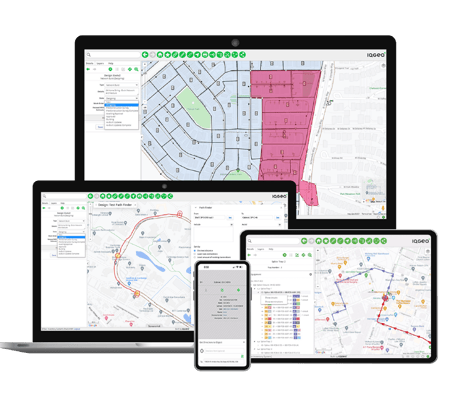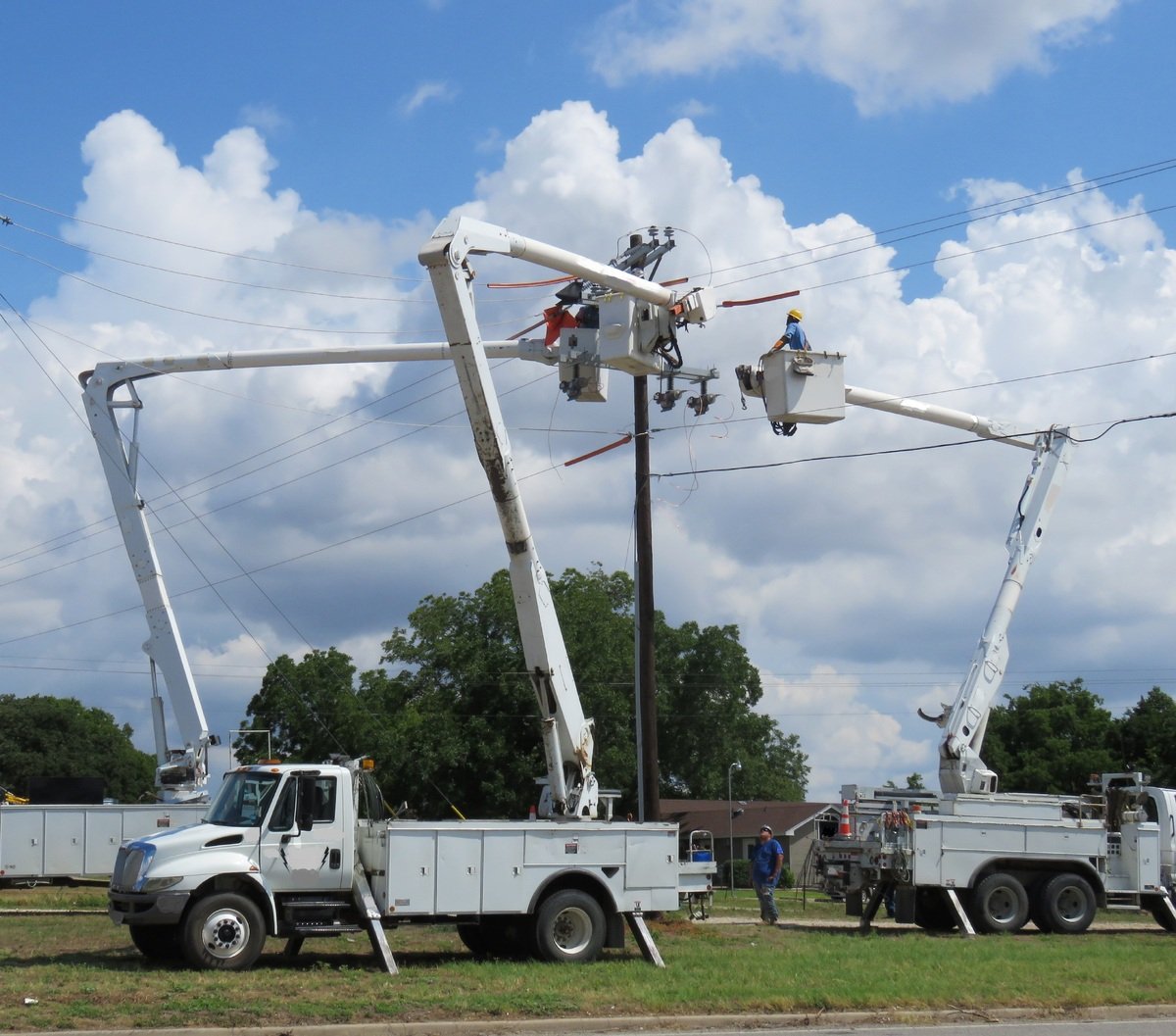Today, broadband operators find themselves in an exciting but challenging position. There is a growing demand for reliable and fast internet services in underserved locations, and full-fiber internet promises to democratize connectivity, whether that is in a city, town or rural location.
Some operators are acting fast to capitalize on this new reality. Recognizing the revenue potential in rural markets, AT&T and Blackrock Ventures recently collaborated and launched Gigapower, a joint venture to provide an open access wholesale fiber network in Mesa, Arizona and other markets.
Alongside the growing market demand, broadband operators also have access to significant funding opportunities to expand their customer base and grow their businesses. Governments worldwide are making substantial investments in digital infrastructure to facilitate fiber rollout efforts and ensure seamless business operations. For example, the US Broadband Equity, Access, and Deployment (BEAD) Program provides $42.45 billion to expand high-speed internet access by funding planning, infrastructure deployment and adoption programs in all 50 states and the Bipartisan Infrastructure Deal offers a generous $55 billion fund dedicated to infrastructure providers, presenting a valuable resource for broadband operators to explore and tap into new markets.
Furthermore, the impending implementation of the GRID Broadband Act by the US government aims to provide grants that promote equitable funding access for newer operators. This act seeks to create a competitive landscape that allows emerging and existing operators to thrive.
To seize these abundant opportunities, operators must act swiftly, ensuring they don't miss out on the potential business benefits. However, while pursuing growth and expansion, they must also be prepared to address the challenges that accompany scaling their operations effectively.
Embracing modern fiber network technology is non-negotiable
Efficient operations are essential for a successful and competitive broadband business. One of the most effective ways for both new and established operators to achieve this is by making early investments in modern technology such as our own Network Manager Telecom software.
Using an optimized and flexible network model to create a network digital twin can enable operators to automate many fiber networks processes. By creating an accurate visual representation of the network, digital twins are a foundation for the entire network lifecycle including planning, design, construction, operations, and the marketing and sale of network capacity. This optimization leads to cost reductions, faster time-to-revenue, and an improved customer experience.![]()
Although there may be initial costs associated with adopting new technology and upgrading systems, the benefits it brings are compelling and long-lasting. Modern tools not only increase customer satisfaction but also lead to decreased network maintenance expenses and higher revenue generation. Fiber operators who have stitched together multiple systems to manage common processes, such as construction, have seen payback in as little as 3 months by implementing a ready to use integrated solution.
A case in point is Brightspeed, which showcases the rewards of investing in IQGeo’s Integrated Network solution. By automating their fiber design process and tightly coupling it with network construction, Brightspeed significantly enhanced efficiency, revenue, and customer experience. Their investment in new technology elevated their technical capabilities, workflow efficiencies, and profitability.
There are lessons to be learned from the Brightspeed case study, enabling other operators to improve their operational effectiveness and establish a genuine competitive edge in the market.
Visit our customer stories page to learn more about IQGeo’s work with Brightspeed.
How can broadband operators avoid costly implementation mistakes?
In the pursuit of success, investing in new technology is paramount for any fiber network operator. Nevertheless, the manner in which this technology is implemented carries equal importance to the technology itself. The implementation of new tools and systems presents unique challenges, demanding careful consideration and meticulous planning.
To optimize outcomes, reduce risks, and control costs, operators can embrace an incremental approach to implementation. This approach can be achieved by initially introducing technology to targeted projects or specific segments of the business, rather than embarking on large-scale, far-reaching initiatives. By breaking the implementation process down into smaller, more manageable steps, operators can achieve short-term return on investment at each stage, empowering them to make necessary adjustments before expanding the scope in future phases. This method effectively identifies and resolves any issues that may arise during implementation, ensuring the technology operates as intended and prevents costly errors, benefiting both larger enterprises and smaller operations.
Pursuing an incremental implementation strategy begins by identifying the areas of their business that stand to gain the most from new technology. By focusing on immediate pain points, they can make targeted improvements that bolster growth and revenue. Subsequently, the gradual rollout of new technology to other areas of the business can be carried out with heightened confidence, effectively minimizing the risks associated with new deployments.
For operators of all sizes, a diligent and thoughtful approach to technology implementation is imperative to ensure successful adoption and enduring value for the business. The incremental approach empowers operators to mitigate risks, maximize benefits and maintain a competitive edge in the ever-evolving telecom industry.
The power of an integrated platform across the network lifecycle
As operators embark on the journey of business transformation, it is best to do so with a wholistic lifecycle perspective. Neglecting this can lead to inaccessible information silos controlled by disconnected applications that hamper business efficiency and network data accuracy. A common scenario arises when employees manually transfer data between different applications and systems, costing time and introducing data inconsistencies.
The key to overcoming this challenge lies in lifecycle integration. Instead of patching together disparate pieces of data and software, broadband operators should prioritize the development of an integrated network strategy that brings together different systems and processes through a shared platform. This forward-looking approach ensures that all employees have access to the same mission critical network information, leading to greater situational awareness and improved productivity, while actually enhancing network data quality.
We’ve seen first-hand how broadband operators implementing our Network Manager Telecom software have created a universal shared platform that fosters a culture of positive collaboration across the organization. Operating different disconnected systems in different departments hinders effective communication and teamwork. However, a shared platform effectively addresses this issue by providing a unified network view for all data and information. This streamlined approach enhances collaboration, allowing employees to effortlessly exchange information between departments and functions, facilitating much greater collaboration across the network lifecycle.
Beyond enhancing collaboration, a shared platform brings significant cost benefits. Dealing with multiple systems often translates to paying for licenses, maintenance and support for each individual component, leading to unnecessary expenses. Not to mention the technical debt accumulated in trying to integrate, update, and manage a collection of software products that all have different behavior and pull in different directions. By consolidating systems into a single platform, companies can effectively reduce technical debt and administrative burdens, resulting in substantial time and cost savings.
Recognizing the value of integration and shared platforms empowers organizations to maximize efficiency, foster collaboration, and optimize costs throughout their incremental business transformations.
TELUS creates integrated network view
TELUS is a strong example of an organization that successfully consolidated their applications into a single network view. Doing so allowed them to monitor key data streams such as weather and disaster information, and intelligent sensor analytics. Creating a consolidated, shared view enabled TELUS to provide their team with a deeper understanding of situational network status, which in turn increased efficiency within teams and allowed the organization to provide better customer service. Field-sourcing geospatial network data also has the added benefit of enabling organizations to significantly reduce the number of updates that require a GIS specialist, thus creating more accessibility within field and operational teams.

Hear about IQGeo’s work with TELUS on our customer stories page.
Partnership is key to the success of broadband operators
When devising an integration strategy, careful consideration of the vendor is crucial. While the idea of a best of breed solution working with multiple vendors may initially seem appealing, it often leads to finger pointing, data loss, and ultimately isolated applications. This can result in a strategy that fails to meet the technical or business needs of the broadband operator. On the other hand, working with a single primary technology vendor, like IQGeo, who deeply understands the operator's network requirements can prove much more efficient. It ensures that the implemented technology aligns with their needs and keeps all stakeholders on the same strategic page.
For example, organizations that use our Network Manager Telecom software as their core network solution are in a much better position to define clear expectations and project objectives. Close collaboration allows operators to tailor the technology and deployment tactics to precisely match their business requirements, leading to a well-defined and concise implementation plan.
The COVID-19 pandemic has accelerated the urgent need for fast and reliable internet, presenting opportunities for new broadband operators and for established enterprises to maintain competitiveness. Emerging markets and government funding initiatives further open up new growth possibilities. By investing in modern technology, gradually implementing it, and seamlessly integrating it into all business processes, operators can effectively compete and achieve their business expansion goals. Selecting the right vendor partner plays a pivotal role in the success of such endeavors.
IQGeo has recently launched three new editions for our Network Manager Telecom software. The new Insight, Professional and Enterprise editions are designed to bring flexibility and scalability to telecom operators of any size and scope. Most importantly, we offer operators a partner that can grow alongside them, understanding their business needs. Discover more about the benefits of Network Manager Telecom.

SVP Americas at IQGeo


 Previous
Previous







